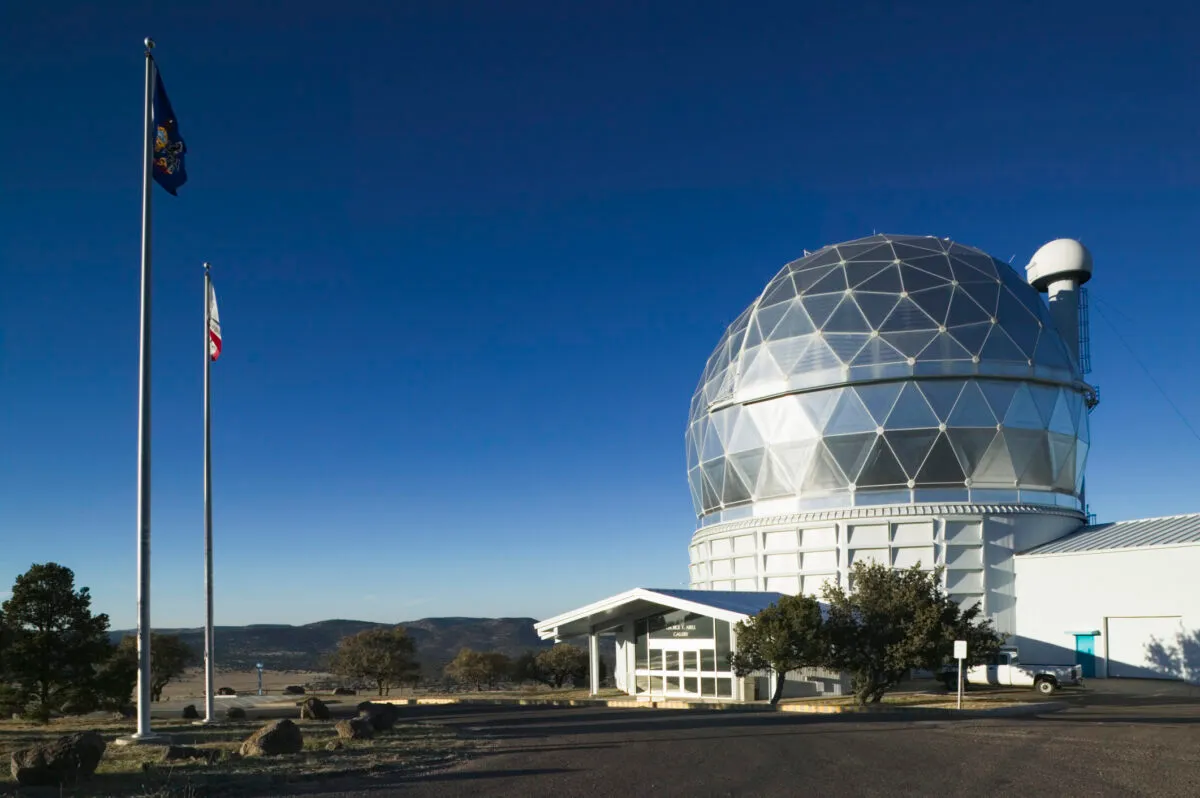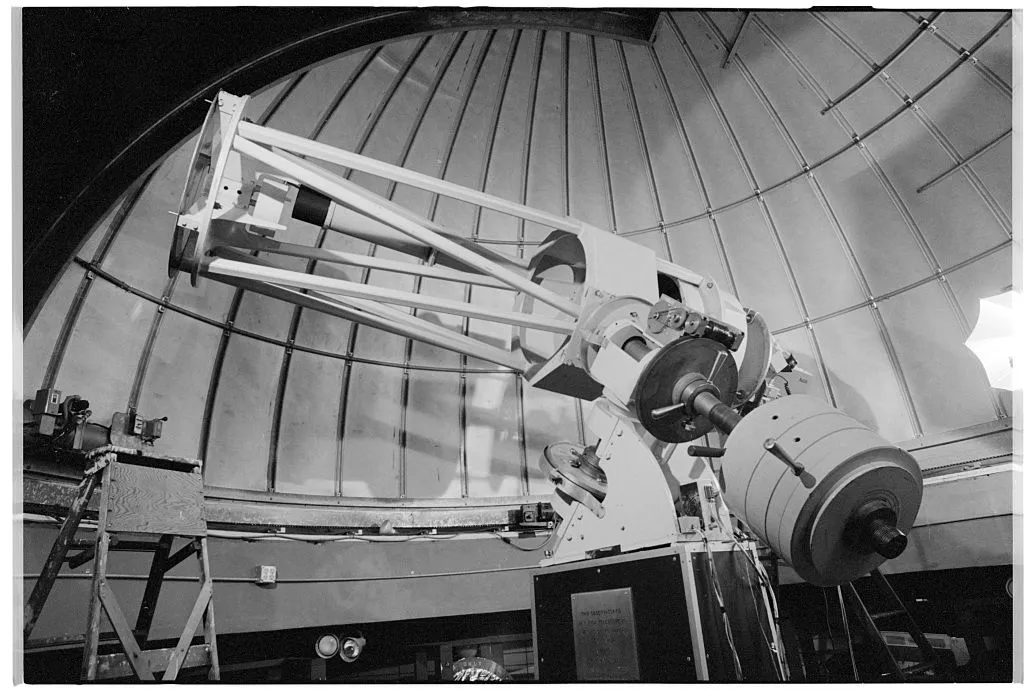It’s often said that stargazing makes people feel small.But stand inside the Zeiss dome at Griffith Observatory watching the Clavius crater in close-up as the Moon tears through the heavens above the City of Angels, and it’s hard not to feel part of a blessed generation. Or two.
You see, the giant 11.8-inch refracting telescope up on the roof within its own spectacular dome has been here in Hollywood (the famous sign is easily visible to east) since 1935, and it looks ancient.

With its 16-foot-long bold brass telescope tube and 10ft-high stepladder to reach the eyepiece, it could well be a museum piece, but its view of Clavius and the Southern Highlands on the lunar surface is hard to beat tonight.
But is its view as good as the technically better trio of Celestron 11-inch CPC 1100 Schmidt-Cassegrain telescopes beside the lawn in front of Griffith Observatory?
Each is manned by some the most enthusiastic amateur astronomers you’re likely to meet, and attracting long queues of Moon-gazers.

“The views through the two telescopes are very similar,” says David B. Reitzel, Astronomical Lecturer at Griffith Observatory.
“The Zeiss is historic and provides the unique experience of looking through a large refractor inside a full dome, while the lawn telescopes outside have modern optics, which give a great view of whatever we are showing, but do lack the fun of being inside a dome.”

Like everything else that matters in Hollywood, the Zeiss Telescope does big numbers: not the $14,900 it cost way back in 1931 when it was purchased from the Carl Zeiss Company of Jena, Germany, but something far more precious.
“More people have looked though the Zeiss than any other telescope on Earth, and I’m not sure how to put a value on all the inspiration it has provided over the years, and still does every night we are open,” says Reitzel.
At last count the giant Zeiss Telescope had transferred the magnified light of a celestial object into the eyes of over seven million people.

Walking around the site, it’s not hard to see how such an astonishing number has been reached; half of L.A. seems to be up here to witness (and take a selfie in front of) a stunning pink sunset, followed by Moon-viewing and a last close-up of Saturn before it sinks into the Pacific Ocean.
This is the best sunset view of L.A. it’s possible to get, though that’s not why everyone is here; I joined the queue for the Zeiss up on the roof well before sunset, and still waited for over half an hour for my minute with the Moon.
This isn’t just any telescope at just any observatory; this one belongs to the four million people of L.A.
“Griffith Observatory was founded as a public observatory with the mission of showing the skies to the public,” says Reitzel, insisting that it was not founded as a research observatory.
“Inspiring the public is extremely serious business – it's the work we were created to do.”

It’s a mission that’s fulfilled flawlessly.
Besides the public telescopes, Griffith Observatory has many riches within, from its Hall of the Eye and Hall of the Sky exhibits to the Leonard Nimoy Event Horizon Theater and Samuel Oschin Planetarium.
The latter is fitted with a Zeiss Universarium Mark IX star projector, and was used to train Apollo astronauts in celestial navigation in the 1960s.
For all the talk of Griffith Observatory as humanity’s most important eye on the sky, there is one slight problem; L.A. itself.

The view of this vast city at night from Griffith Park is stunning, but those light-buckets on the lawn don’t half have a lot to cope with.
On the day of my visit it’s quarter Moon, mid-October, and the stars of the Summer Triangle – nearby Altair, Vega and distant Deneb – are transiting at dusk through some serious light pollution.

The Draconid meteor shower is nowhere to be seen above this vast metropolis that in recent years has become a test-case for the mass-installation of LED street lighting.
“The installation of LED street lights has made the skies brighter on days with even a light fog, as the LED's bluer colour readily scatters,” says Reitzel.
“On clear nights with little haze in the air, the skies seem to be a bit darker overall, but this is rare and the LED lights have not seemed to help alleviate the light pollution.”
Griffith Observatory is certainly not the place to look for faint deep-sky objects, but while the Moon, planets and bright nebulae are visible, it’s become justly famous for the way it communicates the night sky to so many, transforming star-spotters into stargazers.
On a clear night in Hollywood, the Zeiss Telescope is pure box office.

6 of the best observatories in the United States
Jamie Carter's pick of some of the best and most historic observatories in the United States
1
Lowell Observatory, Flagstaff

Home to the historic Pluto Discovery Telescope that commemorates the discovery here of Pluto by Clyde Tombaugh in 1930, this friendly observatory sits on Mars Hill overlooking Flagstaff, Arizona – the world's first International Dark-Sky City.
A fascinating place to visit by day (don't miss the excellent Galaxy Walk in the surrounding forest), evening visitors can look through the historic 24-inch Clark Telescope and several other more modern telescopes in domes, as well as on the lawns.
2
Kitt Peak National Observatory, Tuscon

Just southwest of Tucson in the Arizona-Sonoran Desert, this observatory 2,096m up on Kitt Peak is operated by the National Optical Astronomy Observatory (NOAO) and hosts no less than 24 optical and two radio telescopes.
Daily tours include visits to three large research telescopes, while there is also a range of night-time observing options.
3
McDonald Observatory

Situated on Dark Sky Drive near Fort Davis, Texas, this observatory includes daily solar viewing and tours to its telescopes, including the Hobby-Eberly Telescope (HET), one of the world‘s largest optical telescopes.
However, just as tempting are its ultra-regular Star Parties, which are held no less than three times each week and include time on telescopes in varying sizes up to a 24-inch Ritchey–Chrétien.
4
Yerkes Observatory

Rather grandly called the 'birthplace of modern astrophysics' (Edwin Hubble worked here, as did Carl Sagan), this historic observatory of the University of Chicago opened in 1897 in Williams Bay, Wisconsin, USA.
Yerkes Observatory is open to the public every Saturday.
5
Goldendale Observatory State Park

A couple of hours drive from Portland, Oregon and housed within grounds certified as a Dark Sky Park, Goldendale Observatory's main draw is the chance to have a go on a 24.5-inch Newtonian telescope from the 1960s (though recently refurbished), one of the USA's largest public telescopes, and in its own dome.
An Orion 14-inch Dobsonian is used outside each night.
6
Mauna Kea Observatory (MKO)

The world's largest observatory for optical, infrared, and submillimeter astronomy – and surely the capital of Northern hemisphere astronomy – MKO is a breathless 4,200m up on the summit of Mauna Kea in Hawaii.
Visitors riding in a 4-wheel drive car can visit MKO only 1/2 hour before sunrise until 1/2 hour after sunset, but a Visitor Information Station further down the mountain is open every day for stargazing and more.
If you would like to follow in Jamie’s footsteps and visit the Griffith Observatory for yourself, visit www.griffithobservatory.org.
